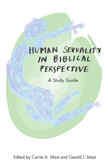| DFD |
||||||
|
|
Followers of Jesus seek to be faithful in our love of God and neighbor in response to the love and grace we have received from God. We do so in our personal lives and in our churches. It is in faith communities where we discern the living shape of that faithfulness. In the context of the congregation, love and common purpose can create a healthy setting for the varied paces and pulls of individual growth and growth of the whole. The inherent and dynamic tension between individual growth and that of the congregation is part of the church’s story. As the circle grows from congregation to conference, the dynamic tension can increase. As leaders of a conference with congregations large and small, rural and urban, we have tried to create circles of conversation at our conference gatherings around unity of purpose in the midst of diversity of perspective and pace of change. As many of our congregations have moved toward full inclusion of gay and lesbian Christian couples, some have also felt called to extend that welcome to the role of pastoral leadership. At the same time, other congregations have continued to follow the traditional teaching that sexual intimacy should be reserved for married heterosexual couples. So we continue to need settings, common language, and biblical tools for our circles of conversation. Discernment is a slow process aided by earnest commitment to each other and to our common desire to be faithful followers of Jesus Christ. It most logically belongs in the local congregation, where relationships of respect best bear the tension of diversity. Mutual commitment to conference life, with its gifts of shared resources and inspiration, does not require uniformity of belief and practice. But the understanding and care that arise within relationships are essential, lest congregations function in isolation and we lose our commitment to give and receive counsel. We
anticipate that this study guide will serve the congregations of
Central District Conference, and perhaps the broader church as well, in
continuing the loving dialogue to which our conference committed, along
with many other Mennonite conferences, thirty years ago. We did not
design this document as a policy statement to be affirmed or rejected
but rather as a discussion tool to be tested and questioned. We do,
however, believe that this study guide offers a fresh biblical
perspective that deserves prayerful consideration and conversation as
we welcome the call of God’s Spirit to test and discern patterns of
faithfulness in our time and place. |
|||||





